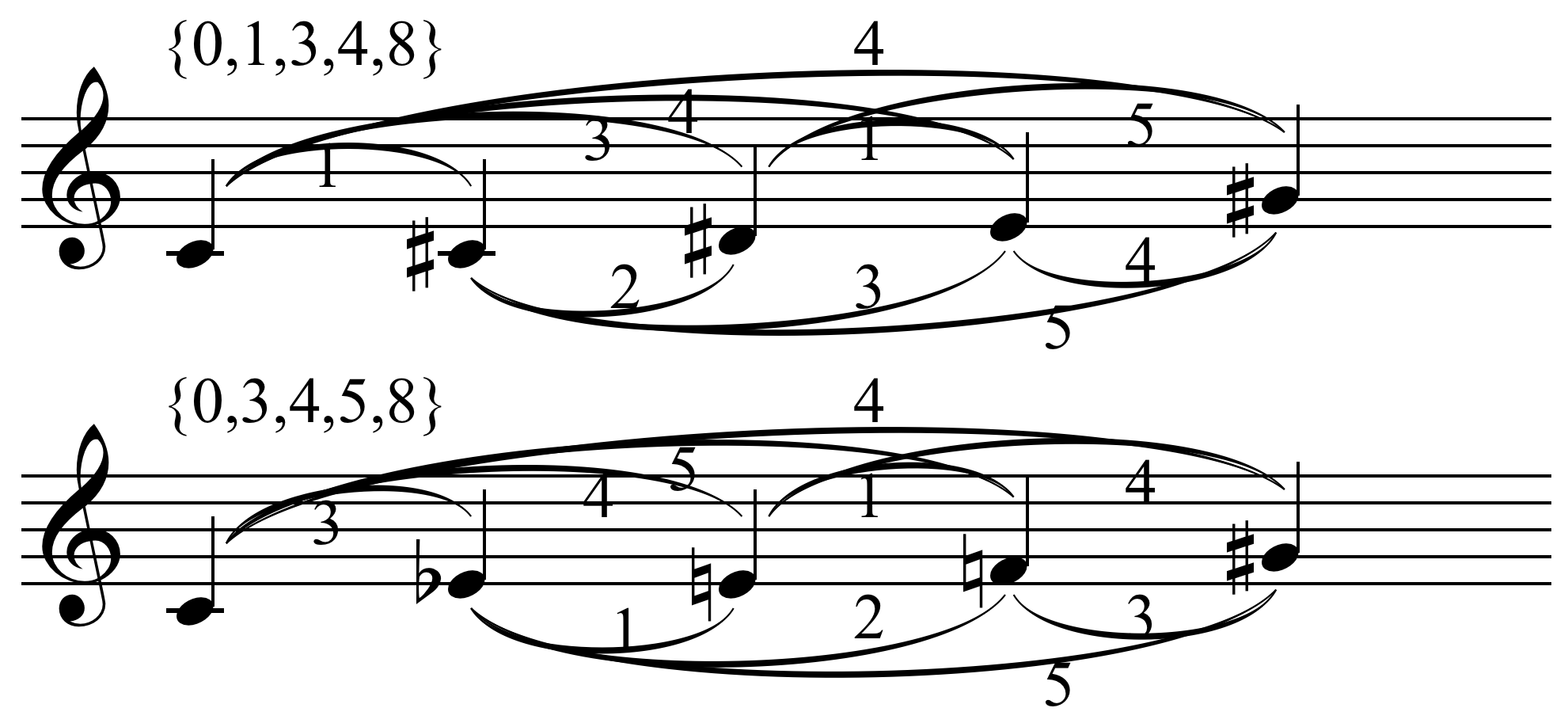|
Diatonic Set Theory
Diatonic set theory is a subdivision or application of musical set theory which applies the techniques and analysis of discrete mathematics to properties of the diatonic collection such as maximal evenness, Myhill's property, well formedness, the deep scale property, cardinality equals variety, and structure implies multiplicity. The name is something of a misnomer as the concepts involved usually apply much more generally, to any periodically repeating scale. Music theorists working in diatonic set theory include Eytan Agmon, Gerald J. Balzano, Norman Carey, David Clampitt, John Clough, Jay Rahn, and mathematician Jack Douthett. A number of key concepts were first formulated by David Rothenberg (the Rothenberg propriety), who published in the journal ''Mathematical Systems Theory'', and Erv Wilson, working entirely outside of the academic world. See also * Bisector *Diatonic and chromatic *Generic and specific intervals Further reading *Balzano, Gerald, "The Pitch Set as a Leve ... [...More Info...] [...Related Items...] OR: [Wikipedia] [Google] [Baidu] |
Set Theory (music)
Musical set theory provides concepts for categorizing musical objects and describing their relationships. Howard Hanson first elaborated many of the concepts for analyzing tonal music. Other theorists, such as Allen Forte, further developed the theory for analyzing atonal music, drawing on the twelve-tone theory of Milton Babbitt. The concepts of musical set theory are very general and can be applied to tonal and atonal styles in any equal temperament tuning system, and to some extent more generally than that. One branch of musical set theory deals with collections ( sets and permutations) of pitches and pitch classes (pitch-class set theory), which may be ordered or unordered, and can be related by musical operations such as transposition, melodic inversion, and complementation. Some theorists apply the methods of musical set theory to the analysis of rhythm as well. Mathematical set theory versus musical set theory Although musical set theory is often thought to involve ... [...More Info...] [...Related Items...] OR: [Wikipedia] [Google] [Baidu] |
Mathematical Systems Theory
Dynamical systems theory is an area of mathematics used to describe the behavior of complex dynamical systems, usually by employing differential equations or difference equations. When differential equations are employed, the theory is called ''continuous dynamical systems''. From a physical point of view, continuous dynamical systems is a generalization of classical mechanics, a generalization where the equations of motion are postulated directly and are not constrained to be Euler–Lagrange equations of a least action principle. When difference equations are employed, the theory is called ''discrete dynamical systems''. When the time variable runs over a set that is discrete over some intervals and continuous over other intervals or is any arbitrary time-set such as a Cantor set, one gets dynamic equations on time scales. Some situations may also be modeled by mixed operators, such as differential-difference equations. This theory deals with the long-term qualitative behavior ... [...More Info...] [...Related Items...] OR: [Wikipedia] [Google] [Baidu] |
David Rothenberg
David Rothenberg (born 1962) is a professor of philosophy and music at the New Jersey Institute of Technology, with a special interest in animal sounds as music. He is also a composer and jazz musician whose books and recordings reflect a longtime interest in understanding other species such as singing insects by making music with them. Life and work Rothenberg graduated from Harvard and took his PhD from Boston University. Looking back at his high school years in the 1970s, Rothenberg told Claudia Dreifus of ''The New York Times'', "I was influenced by saxophonist Paul Winter's ''Common Ground'' album, which had his own compositions with whale and bird sounds mixed in. That got me interested in using music to learn more about the natural world." As an undergraduate at Harvard, Rothenberg created his own major to combine music with communication. He traveled in Europe after graduation, playing jazz clarinet. Listening to the recorded song of a hermit thrush, he heard st ... [...More Info...] [...Related Items...] OR: [Wikipedia] [Google] [Baidu] |
In Theory Only
''In Theory Only'' () was a peer-reviewed academic journal specializing in music theory and analysis. It began publication in 1975, under the auspices of graduate students in music theory at the University of Michigan School of Music, Theatre & Dance, making it the first of the graduate-student produced theory journals to debut in the U.S. (followed two years later by ''Indiana Theory Review The ''Indiana Theory Review'' () is a peer-reviewed academic journal specializing in music theory and analysis. It began publication in 1977, under the auspices of graduate students in music theory at the Jacobs School of Music, making it the seco ...'').David Carson Berry, "Schenkerian Theory in the United States: A Review of Its Establishment and a Survey of Current Research Topics," ''Zeitschrift der Gesellschaft für Musiktheorie'' 2/2–3 (2005), 111 (online version at http://www.gmth.de/zeitschrift/artikel/206.aspx). The journal initially employed the subtitle "Newsletter of the Michig ... [...More Info...] [...Related Items...] OR: [Wikipedia] [Google] [Baidu] |
Kraig Grady
Kraig Grady (born 1952) is a US-Australian composer/sound artist. He has composed and performed with an ensemble of microtonal instruments of his own design and also worked as a shadow puppeteer, tuning theorist, filmmaker, world music radio DJ and concert promoter. His works feature his own ensembles of acoustic instruments, including metallophones, marimbas, hammered dulcimers and reed organs tuned to microtonal just intonation scales. His compositions include accompaniments for silent films and shadow plays. An important influence in the development of Grady's music was Harry Partch, like Grady, a musician from the Southwest, and a composer of theatrical works in Just Intonation for self-built instruments. Many of his compositions use unusual meters of very extended lengths. Biography Born in Montebello, California in 1952, Grady began composing while still in his teens. After studies with Nicolas Slonimsky, Dean Drummond, Dorrance Stalvey and Byong-Kon Kim, he produced h ... [...More Info...] [...Related Items...] OR: [Wikipedia] [Google] [Baidu] |
